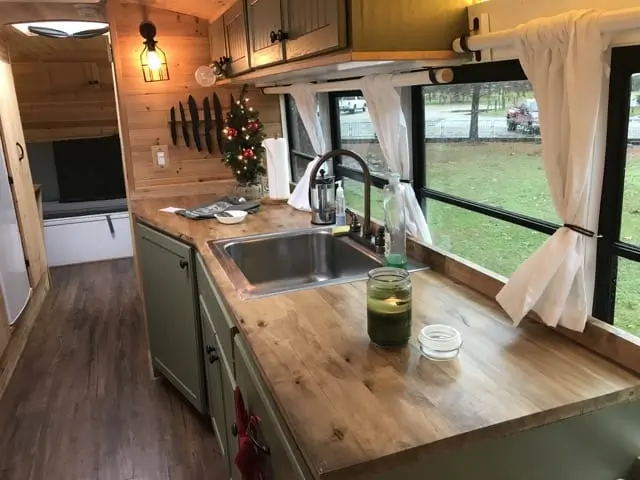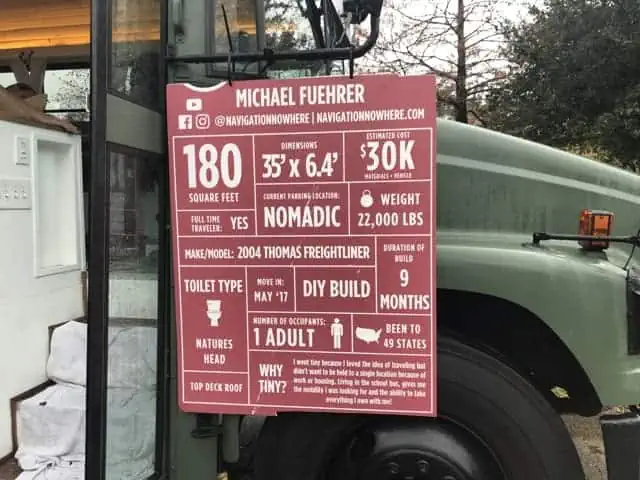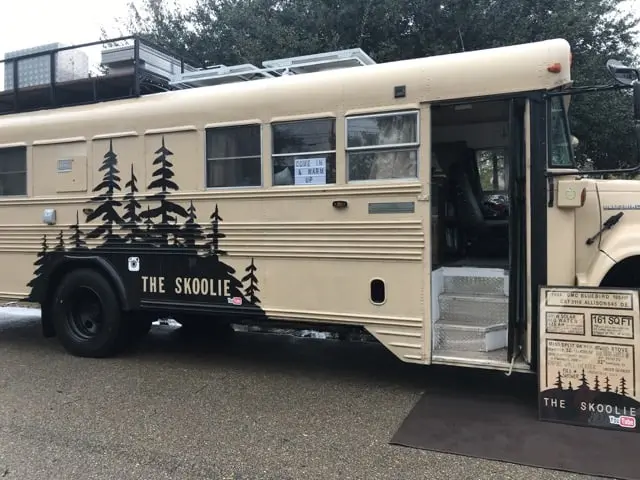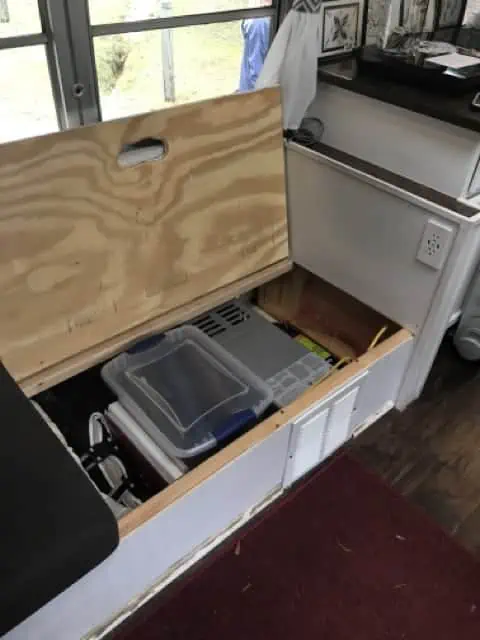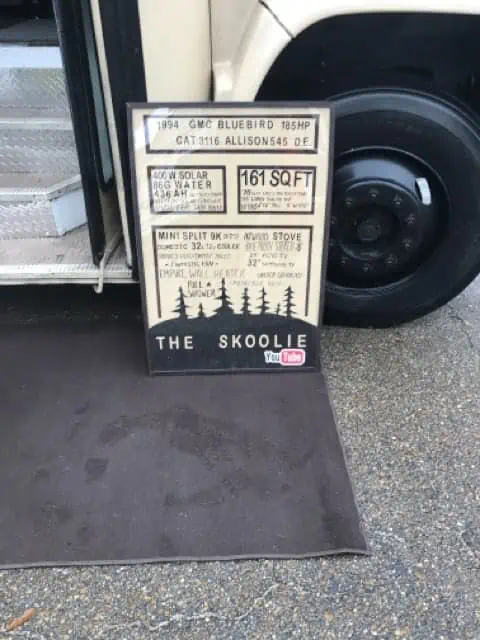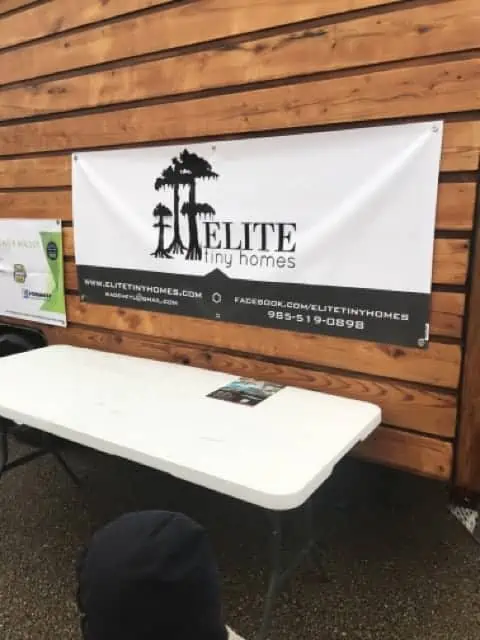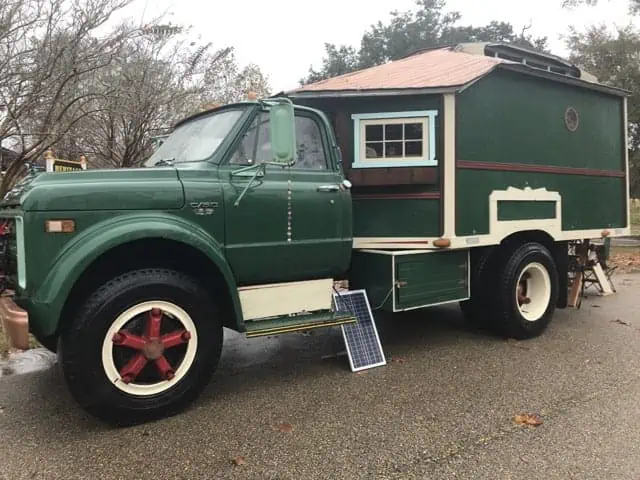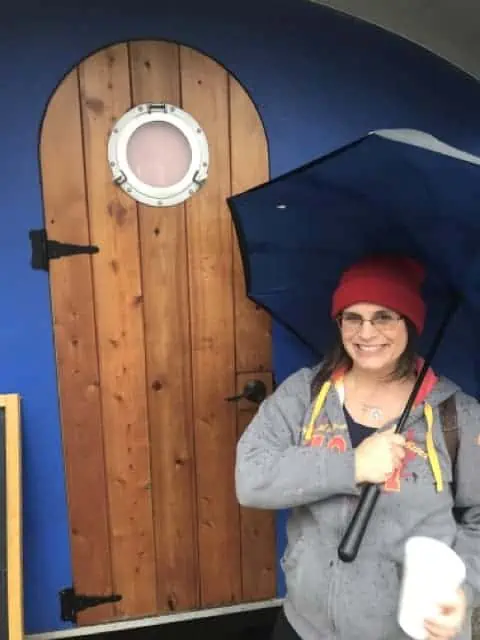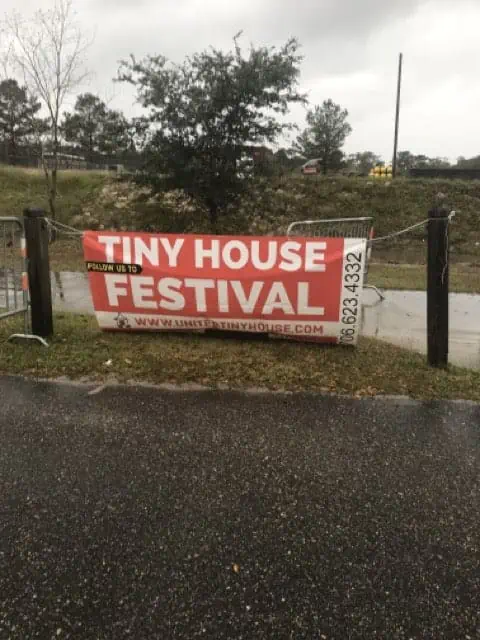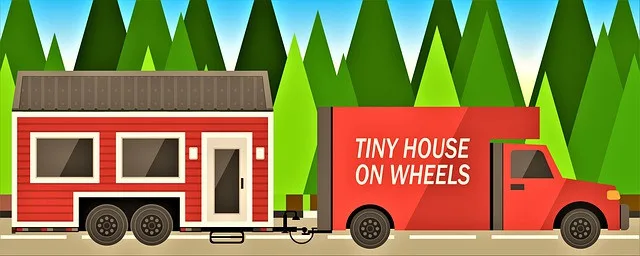Global warming, delayed retirement, rising prices, debt, stress, and less time for fun. They are all a very real reality for so many people.
My own parents worked well into 70s! I hate that for them.
It’s important to remember that you’re not alone in your stress and worries.
Let’s face it, the value of money isn’t what it used to be, and our lives seem to be getting busier by the day.
Maybe you’ve also noticed the increasing trend towards smaller, more compact living spaces in the housing market.

Some people have adopted the tiny life philosophy, freeing themselves from debt and opening their minds to new ways of thinking.
This is the rise of the Tiny House Movement. It is an alternative housing option growing in popularity all over the world.
From minimalistic living to environmental sustainability, more people are ditching traditional homes for something smaller.
But what exactly is the tiny house movement, and why are so many people choosing to live in these small homes?
Join us as we dive into this growing phenomenon and uncover everything you need to know about the Tiny House Movement and the growing popularity of the tiny home lifestyle.
- Housing prices are increasing, and many choose to reduce expenses by downsizing into tiny houses.
- The average cost of a tiny home is $50,000 to $100,000
- Some tiny houses are placed on foundations, and others are on wheels.
- A tiny house has 100 square feet to 400 square feet of living space.
- The Tiny House Movement is growing in popularity, with the tiny house market forecast to grow another $4.17 Billion by 2027.
Disclosure: This post may contain affiliate links, meaning I can earn commissions. If you decide to purchase through my links, it is at no cost to you.
What Is The Tiny House Movement?
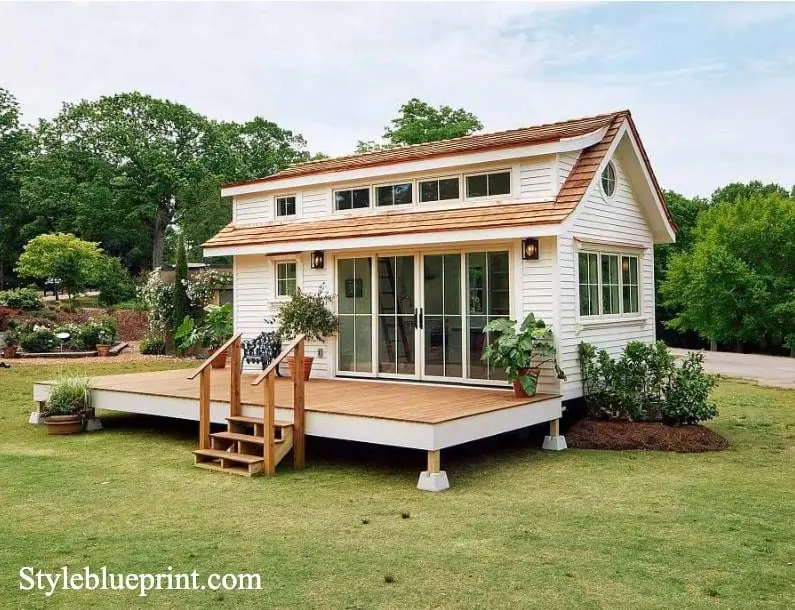
The tiny house movement is more than just an architectural trend – it represents a shift in how people view homeownership and the concept of a “home.”
It has become a social movement that advocates for living in smaller, more sustainable homes. The need to live an intentional life has never been stronger.
These homes are typically less than 400 square feet, often called tiny houses. They are designed to maximize space efficiency and promote a minimalist lifestyle.
Why Join the Tiny-House Movement?
There are many reasons why people are choosing to join the tiny house movement.
Two main factors are the overall cost of living and the price of housing. With rising housing prices and increasing mortgage rates, many people struggle to afford a traditional house.

Consider all the things that make up your housing expenses: mortgage, property taxes, insurance, utilities, space furnishing, and general maintenance.
Tiny houses offer a more affordable alternative. This allows homeowners to live debt-free or with minimal mortgage payments.
The Small House Movement and The Joy of Small Space Living
Another reason why people are drawn to the tiny house movement is the joy of living with less.
Many people find fulfillment in simplifying their lives in a society that emphasizes material possessions and consumerism.
By downsizing to a tiny house, individuals and families must reevaluate their belongings and prioritize what truly matters to them.
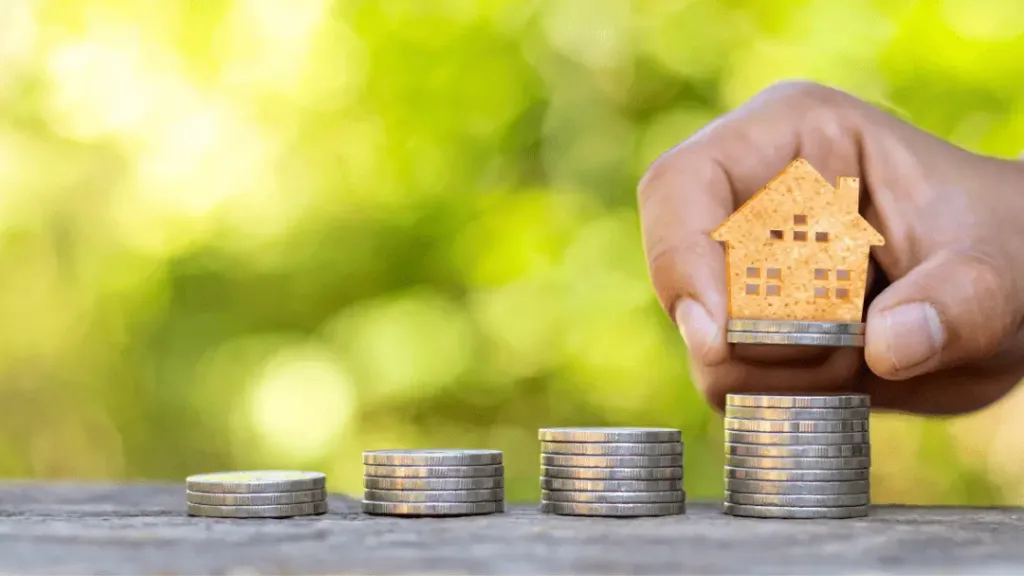
Who’s Joining the Tiny House Movement?

The tiny house movement has attracted a diverse group of individuals and families, including:
- Millennials: Many young adults go tiny to save money, pay off debt, and live a more sustainable lifestyle.
- Empty Nesters: Empty nesters are downsizing from their larger homes or dream homes and embracing tiny-house living to simplify their lives.
- Retirees: Retirees find that living in a tiny house allows them to downsize and stretch their retirement savings further.
- Environmentalists: Those passionate about the environment see tiny houses as a way to minimize their ecological footprint and live more sustainably in less space.
Tiny Home Movement Growth
The tiny home movement has experienced significant growth in recent years. According to Technavio, “The tiny house market is forecast to grow another $4.17 million by 2027.”
Technavio
What was once considered a niche lifestyle choice has gained widespread attention and popularity. So many people are giving up the conventional home concept to move into a tiny house.
Check out Tiny House Books
on Amazon
Tiny house communities, festivals, and events have sprung up nationwide, allowing like-minded individuals to connect and share their experiences.
Here are a few photos of our time at a local Tiny House Festival.
What Tiny House Living Looks Like
It is all about maximizing space and minimizing clutter. These homes are designed to be functional and efficient, with carefully thought-out layouts and clever storage solutions.
It is amazing to see how creative some tiny house owners have gotten with the space they have to work with.
Inside a tiny house, you’ll typically find a living area, a kitchenette, a bathroom, and a loft or sleeping area. Despite the small size, these homes offer all the amenities one needs for a comfortable living experience.
The space below is similar to a garage and is a popular layout in ADU Garage Conversions.
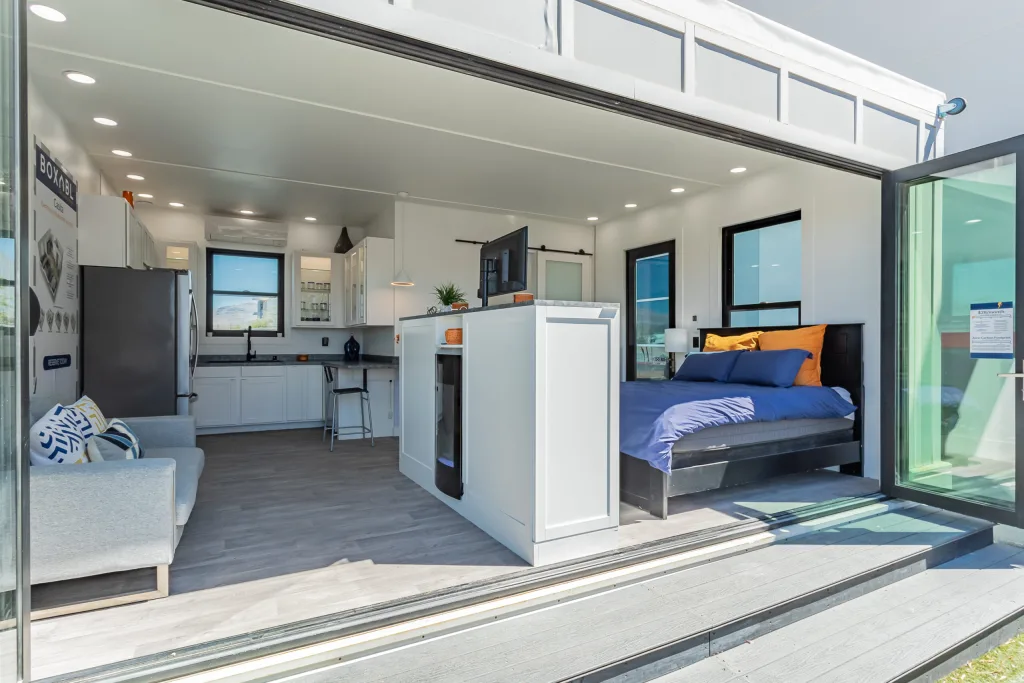
Tiny House Living and Small Living Square Footage
When it comes to tiny houses, size truly matters. Tiny houses come between 100 and 400 square feet.
You read that right – 100 square feet! A 10 x 10 room is 100 square feet. With that amount of space, you learn how to live creatively.
These compact homes are ingeniously designed to make the most of every inch of space, with clever storage solutions and multi-functional furniture.
The Cost of Buying A Tiny Home vs. a Traditional Home
Buying a house can be a major financial burden for many individuals and families. Some home buyers have lost their homes in the U.S. when inflation and the pandemic hit.
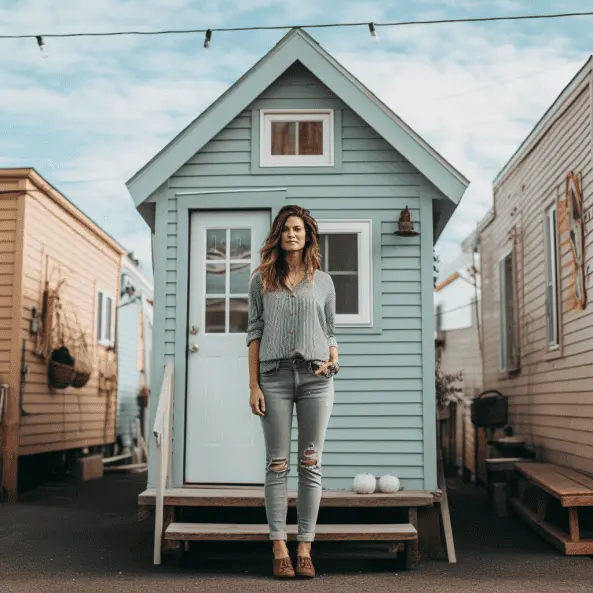
Traditional homes often come with hefty price tags, making them inaccessible for those on a tight budget.
Home builders seem to be making homes bigger and bigger with a price tag to match.
According to Hud.gov, “The median sales price of new houses sold in March 2023 was $449,800.” That is not realistic for most people.
What is happening is people are having to work more just to be able to have a place to sleep at night before they wake up and do it all again.
In contrast, the average cost of a tiny house is much more affordable, ranging from $50,000 to $105,000. Of course, like any space, it depends on what goes into it, which will affect the price.
This affordability makes it easier for people to become homeowners and achieve financial freedom, especially if they desire more time away from work.

12 Surprising Facts you Discover when Live the Tiny Life
- The average cost of building a tiny house is around $50,000-$100,000, although this can vary depending on factors such as size, location, and level of customization. Some can build it for cheaper with reclaimed materials.
- Many tiny houses are built on wheels, allowing homeowners to transport their homes to different locations easily.
- To minimize their environmental impact, tiny houses often incorporate sustainable features such as solar panels, composting toilets, and rainwater collection systems.
- Despite their small size, tiny houses can also be designed to accommodate families of all sizes with clever space-saving solutions such as bunk beds, Murphy beds, and multi-functional convertible furniture.
- The tiny house trend is not limited to single individuals or couples – many families with children have turned to tiny living to simplify their lives and spend more quality time together.
- Living in a tiny house can significantly reduce your utility bills, as these homes require less energy to heat, cool, and maintain.
- Financing options for tiny homes may be available, although they can be more limited than traditional home financing.
- Some cities and towns have embraced the tiny house movement by creating communities or allowing tiny houses in certain areas.
- Tiny living can be a great way to declutter and minimize belongings.
- Tiny houses offer the opportunity to live a more mobile and simpler lifestyle, as you can easily move your home to different locations.
- Despite their small size, many tiny houses are designed with comfortable, stylish interiors with modern finishes and amenities. I have seen some very impressive tiny houses!
- The tiny house movement is not just a fad – it has gained significant traction in recent years and is becoming a viable alternative to traditional homeownership.
What Does The Tiny Life Mean?
The tiny life refers to the lifestyle and mindset of living in a smaller home size or space. It is a conscious choice to live with less and prioritize experiences and relationships over material possessions.
Although tiny houses, by definition, are less than 400 square feet, some have embraced small house living by choosing a home with less than 800 square feet, still much smaller than the average-sized houses.
What Type Of House Is Considered A Tiny House?
A tiny house can come in various forms and designs.
The most common type of tiny house is a small, compact dwelling on wheels, but there are also tiny houses built on a foundation. These homes can be self-built or professionally designed and built by tiny house builders.
Some tiny homes are built with wood, while others may utilize a shipping container or RV for their structure.
Related Articles 📚
Ways To Live Tiny
There are many ways to embrace the tiny life and live tiny:
- Building a tiny house: This option allows for complete customization and can be a rewarding DIY project.
- Hiring a professional builder: If you’re not the handy type, you can hire a professional builder to create your dream tiny home.
- Renting a tiny house: If you’re not ready to commit to tiny home living full-time, you can try it out by renting a tiny house for a vacation or short-term stay.

What is a Tiny House?
A tiny house is a small, compact living space in less than 400 square feet.
These homes are designed to be fully functional and efficient, with clever space-saving features and designs.
Why People Are Going Tiny
There are many reasons why people are choosing to go tiny:
- Financial Benefits: Tiny home living offers a more affordable housing option, allowing homeowners to save on mortgage payments, utilities, and maintenance costs.
- Simplification: Living in a small space forces people to downsize and simplify their lives, focusing on what truly matters.
- Maintenance: A tiny home is easier to maintain than a larger home.
- Environmental Benefits: Tiny houses have a smaller carbon footprint than traditional homes, requiring less energy to heat and cool. This means less impact on the environment.
Challenges of Going Tiny
While living in a tiny house can be an incredibly rewarding experience, it also comes with its challenges:

- Limited Space: Living in a small space requires careful organization and management of belongings to maximize space.
- Building Codes: Depending on your location, certain building codes and regulations may be required when constructing a tiny house.
- Legality of Tiny Homes: Many areas have zoning regulations that do not allow tiny homes on foundations or wheels.
- Finding a Suitable Location: Finding a place to park your tiny house can be challenging, as not all areas allow for tiny houses.
Where to Park Your Tiny House
One of the biggest challenges for tiny house owners is finding a suitable place to park their homes. While some individuals live off-grid on private land, others opt for tiny house communities or RV parks that allow for tiny houses.
It is important to research and understand your area’s zoning laws and regulations before deciding where to park your tiny home.
Financing and Insurance
Financing options for tiny houses can be more limited than traditional home financing. However, some lenders specialize in tiny house loans and personal loans that can be used for tiny house purchases.
As for insurance, some companies offer specialized tiny house insurance coverage ensuring your home is protected.
Learn More and Get Involved

Many resources are available to learn more about the tiny house movement.
Here are some helpful resources to get you started on your tiny house journey:
- Tiny House Books: Tiny House books offer valuable information. They provide detailed instructions, diagrams, and tips for designing and constructing a tiny house, including legal and zoning considerations.
- Tiny House Community: Connect with other tiny house enthusiasts and find valuable resources and information.
- Tiny House Blogs: Explore blogs dedicated to tiny house living and design for inspiration and ideas.
- Tiny House Builders: If you’re ready to build a tiny house, contact professional builders for guidance and assistance.
The top 3 questions on the tiny house movement
How did the tiny-house movement start?
The tiny house movement traces back to the late 1990s and early 2000s when a few individuals started downsizing and living in small, mobile dwellings to simplify their lives and reduce their environmental impact.
The movement gained more attention and followers by releasing popular documentaries and TV shows showcasing the tiny house lifestyle.
How much does a tiny house cost?
The cost of a tiny house can vary greatly depending on factors such as size, location, level of customization, and whether you choose to build it yourself or hire a professional builder.
Building a tiny house costs from $50,000 to $100,000. The price per square foot is hard to pin down because it will depend on how you use the square footage.
Is tiny-house living for you?
Tiny-house living is not for everyone. It requires a certain mindset and the ability to embrace a minimalist lifestyle.
Before deciding to go tiny, it is important to assess your needs, preferences, and long-term goals to determine whether tiny house living aligns with your values and lifestyle.

Final Thoughts
A tiny home is a great way to combat rising prices and challenge ourselves to downsize and cut back on material possessions.
It may not be possible for everyone, but if you’re looking for something unique, smaller spaces can offer a better quality of life. By cutting back on what we don’t need and focusing on the things that really matter, we can all strive for simpler lives.
So why not give Tiny Living a try? You may be surprised at how much you gain when you downsize with the tiny house movement.
Frequently Asked Questions
What is the tiny house movement?
The tiny house movement is an architectural and social movement promoting living in small homes. It has gained popularity as a way to embrace minimalistic living and reduce environmental impact.
What is the definition of a tiny house?
A tiny house is a small house that is typically around 100 to 600 square feet in size. It may be on wheels or a foundation designed to maximize space while providing the basic amenities needed for comfortable living.
How much does it cost to build a tiny house?
The cost of building a tiny house can vary depending on size, materials, and location. It can cost between $50,000 and $100,000.
What are the advantages of living in a tiny house?
Tiny house living offers several advantages: reduced expenses, a simplified lifestyle, mobility (if on wheels), and a smaller environmental footprint. It can also provide opportunities for creativity in design and a sense of community among tiny homeowners.
Can I join the tiny house movement if I own a traditional home?
You can still join the tiny house movement, even owning a traditional home. Many choose to downsize their living space and purchase or build a tiny house as a second or vacation home.
What is the minimum size for a tiny house?
Most would not go under 100 square feet as that gets into the micro homes, which may not be ideal for long-term living. No matter the space, you have an efficient living space that meets your needs.
How do I join the tiny house movement?
To join the tiny house movement, you can start by researching and learning about tiny living, attending tiny house events or workshops, connecting with other tiny house enthusiasts online or in person, and considering whether living in a tiny house aligns with your lifestyle and goals.
How do I buy a tiny home?
You can purchase a pre-built tiny home from a tiny house builder, buy a used tiny home, or even build your own if you have the necessary skills and knowledge. It is important to do thorough research and consider your budget and preferences before purchasing.
Are there any drawbacks to living in a tiny house?
While living in a tiny house can have many benefits, it is important to consider some potential drawbacks. These may include limited storage space, challenges with zoning and regulations, and the need to downsize and declutter your belongings.
Is living in a tiny house a long-term solution?
Some people live in a tiny house for the long term, while others may see it as a temporary living arrangement or lifestyle experiment. Evaluate your needs and goals before committing to tiny house living.
Image Source: Canva, Pexels, Pixabay, Open Verse, Unsplash



